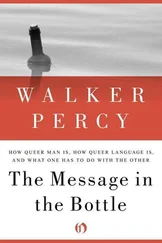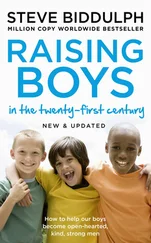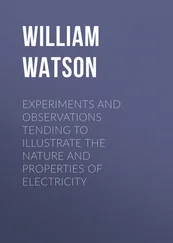Mark Changizi - Harnessed - How Language and Music Mimicked Nature and Transformed Ape to Man
Здесь есть возможность читать онлайн «Mark Changizi - Harnessed - How Language and Music Mimicked Nature and Transformed Ape to Man» весь текст электронной книги совершенно бесплатно (целиком полную версию без сокращений). В некоторых случаях можно слушать аудио, скачать через торрент в формате fb2 и присутствует краткое содержание. Год выпуска: 2011, Издательство: Perseus Books Group, Жанр: Старинная литература, на английском языке. Описание произведения, (предисловие) а так же отзывы посетителей доступны на портале библиотеки ЛибКат.
- Название:Harnessed: How Language and Music Mimicked Nature and Transformed Ape to Man
- Автор:
- Издательство:Perseus Books Group
- Жанр:
- Год:2011
- ISBN:нет данных
- Рейтинг книги:5 / 5. Голосов: 1
-
Избранное:Добавить в избранное
- Отзывы:
-
Ваша оценка:
- 100
- 1
- 2
- 3
- 4
- 5
Harnessed: How Language and Music Mimicked Nature and Transformed Ape to Man: краткое содержание, описание и аннотация
Предлагаем к чтению аннотацию, описание, краткое содержание или предисловие (зависит от того, что написал сам автор книги «Harnessed: How Language and Music Mimicked Nature and Transformed Ape to Man»). Если вы не нашли необходимую информацию о книге — напишите в комментариях, мы постараемся отыскать её.
Harnessed: How Language and Music Mimicked Nature and Transformed Ape to Man — читать онлайн бесплатно полную книгу (весь текст) целиком
Ниже представлен текст книги, разбитый по страницам. Система сохранения места последней прочитанной страницы, позволяет с удобством читать онлайн бесплатно книгу «Harnessed: How Language and Music Mimicked Nature and Transformed Ape to Man», без необходимости каждый раз заново искать на чём Вы остановились. Поставьте закладку, и сможете в любой момент перейти на страницу, на которой закончили чтение.
Интервал:
Закладка:
Given the fundamental status of interaction-ring combinations, if language harnesses the innate powers of our auditory system, then we expect language to be built out of vocalizations that sound like interaction-ring. Do languages have this feature? That is, do plosives and fricatives tend to be followed by sonorants? Yes. A plosive or fricative followed by a sonorant is, in fact, the most basic and most common phoneme combination across languages. It is the quintessential example of a syllable . Words across humankind tend to look approximately like ca , or caca , or cacaca , where c stands for a plosive or fricative, and a for one or more consecutive sonorants. All languages have syllables of this ca form. And many languages—such as Japanese— only allow syllables of this form.
Whereas interaction-ring is the most fundamental natural combination of event atoms, ring-interaction is a combination that is not possible. A ring followed by an interaction sounds out of this world, as in my friend’s son’s Rubik’s Cube video. We therefore expect that languages tend to avoid combinations like ac and acac . This is, in fact, the case. The rarest syllable type is of this ac form, and words starting with a sonorant and followed by a plosive or fricative are rare. In data I collected at RPI in 2008 with the help of undergraduate student Elizabeth Counterman and graduate student Kyle McDonald, about 80 percent of our sampled words (with three or fewer non-sonorants) across 18 widely varying languages begin with a plosive or a fricative. (See the legend of Figure 9 for a list of the sampled languages.) And a large proportion of the words starting with a sonorant start with a nasal, like “m” and “n,” the least sonorant-like of the sonorant consonants (nasals at word starts can have a fairly sudden start, and are more plosive-like than other sonorant consonants).
Note that a word starting with a vowel does not start with a sonorant, because when one speaks such a word, the utterance actually begins with something called a glottal plosive , produced via the sudden hitlike release of air at one’s voice box. To illustrate the glottal plosive, slowly say “packet,” and then slowly say “pack it.” When you say the latter, there can often be a sharp beginning to the “it,” something that will never occur before the “et” sound in “packet.” That sharp beginning is the glottal plosive. Words starting with sonorants are, thus, less common than one might at first suspect. Even words like “ear,” “I,” “owe,” and “owl,” then, are cases of plosives followed by sonorants, and agree with the common hit-ring (the most common kind of interaction-ring) structure of nature.
Words truly beginning with a sonorant sound begin not with a vowel, but with a sonorant consonant like w, y, l, r, and m. When one says, “what,” “yup,” “lid,” “rip,” and “map,” the start of the word is nonsudden (or less sudden than a plosive), ramping up more gradually to the sonorant sound instead. And notice that words such as these—with a sonorant at the start and a plosive at the end— do sound like backwards sounds. Try saying the following meaningless sentence: “Rout yab rallod.” Now say this one: “Cort kabe pullod.” Although they are similar, the first of these meaningless sentences sounds more like events in reverse. This is because it has words of the ring-hit form, the signature sound of a world in reverse. The second sentence, while equally meaningless, sounds like typical speech (and event) sounds, because it starts with plosives.
Language’s most universal structure above the level of phonemes—the syllable—has its foundation, then, in physics. The interaction-rings of physical events got instilled into our auditory systems over hundreds of millions of years of vertebrate and mammalian evolution, and culture shaped language to sound like physics in order to best harness our hardware.
Before we move next to the shape of words, there is another place where syllables play a central role: in rhyme. Two words rhyme if their final syllables have the same sonorant sound, and the same plosive or fricative following the sonorant—for example, “snug as a bug in a rug.” The sonorant sound is the more important of the two: “bug” rhymes better with “bud” than with “bag.” Our ecological understanding of syllables may help to make sense of the perceptual salience of rhyme. When two events share the same ring sound, it means the same kind of object is involved in both events. For example, “tell and “sell” rhyme, and in terms of nature’s physics, they sound like two distinct events involving the same object. “Tell” might suggest that some object has been hit, and “sell” that that same object is now sliding. The “ell” in each case signals that it is the same object undergoing different events. This is just the kind of gestalt perceptual mechanism humans are well known to possess: we attempt to group stimuli into meaningful units. In vision this can lead to contours at distant corners of an image being perceptually treated as parts of one and the same object, and in audition it can lead to sounds separated by time as nevertheless grouped into the same object. That’s what happens in rhyme: the second word of a rhyming pair may occur several lines later, but our brain hears the similar ringing sound and groups it with the earlier one, because it would be likely in nature that such sounds were made by one and the same object.
In the Beginning
The Big Bang is the ultimate event, and even it illustrates the typical physical structure of events: it started with a sudden explosion, one whose ringing is still “heard” today as the background microwave radiation permeating all space. Slides didn’t make an appearance in our universe until long after the Bang. As we will see in this section, hits, slides, and rings tend to inhabit different parts of events, with hits and rings—bangs—favoring the early parts.
To get a feeling for where hits, slides, and rings occur in events, let’s take a look at a simpler event than the one that created the universe. Take a pen and throw it onto a table. What happened? The first thing that happened is that the pen hit the table; the audible event starts with a hit. Might this be a general feature of solid-object physical events? There are fundamental reasons for thinking so, something we discussed in the earlier section, “Nature’s Other Phoneme.” We concluded that whereas hits can occur without a preceding slide, slides do not tend to occur without a preceding hit. Another reason why slides do not tend to start events is that friction turns kinetic energy into heat, decreasing the chance for the slide to initiate much of an event at all. So, while hits can happen at any part of an event, they are most likely to occur at the start. And while slides can also happen anywhere in an event, they are less likely to occur near the start. Note that I am not concluding that slides are more common than hits at the nonstarts. Hits are more common than slides, no matter where one looks within solid-object physical events. I’m only saying that hits are more common at event starts than they are at nonstarts, and that slides are less common at event starts than they are at nonstarts.
Is this regularity about the kinds of interaction at the starts and nonstarts of events found in spoken language? Yes. Words of the form bas are more common than words of the form sab (where, as earlier, b stands for a plosive, s for a fricative, and a for any number of consecutive sonorants). Figure 9 shows the probability that a non-sonorant is a plosive (rather than a fricative) as one moves from the start of a word to non-sonorants further into the word. The data come from 18 widely varying languages, listed in the legend. One can see that the probability that the non-sonorant phoneme is a plosive begins high at the start of words, after which it falls, matching the pattern expected from physics. And, as anticipated, one can also see that the probability of plosives after the start is still higher than the probability of a fricative.
Читать дальшеИнтервал:
Закладка:
Похожие книги на «Harnessed: How Language and Music Mimicked Nature and Transformed Ape to Man»
Представляем Вашему вниманию похожие книги на «Harnessed: How Language and Music Mimicked Nature and Transformed Ape to Man» списком для выбора. Мы отобрали схожую по названию и смыслу литературу в надежде предоставить читателям больше вариантов отыскать новые, интересные, ещё непрочитанные произведения.
Обсуждение, отзывы о книге «Harnessed: How Language and Music Mimicked Nature and Transformed Ape to Man» и просто собственные мнения читателей. Оставьте ваши комментарии, напишите, что Вы думаете о произведении, его смысле или главных героях. Укажите что конкретно понравилось, а что нет, и почему Вы так считаете.












